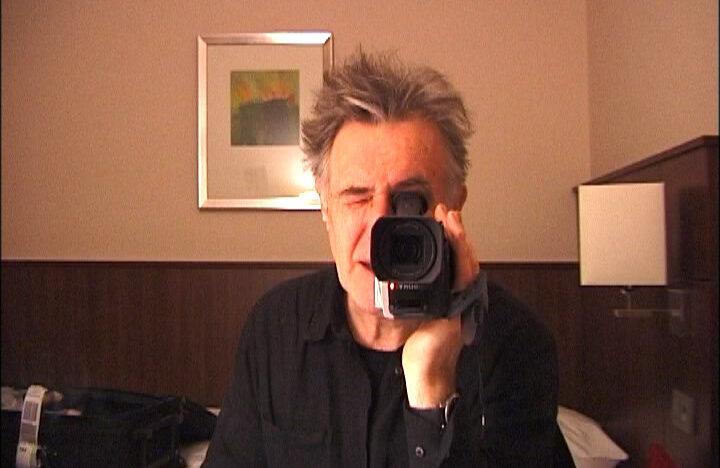In Person: John Smith
Program 1
Leading Light (GB 1975, 16mm, colour, 11 Min.)
The Girl Chewing Gum (GB 1976, 16mm, b/w, 12 Min.)
Hackney Marshes - November 4th 1977 (GB 1977, 16mm, colour, mute, 15 Min.)
Om (GB 1986, 16mm, colour, 4 Min.)
The Black Tower (GB 1985-87, 16mm, colour, 24 Min.)
Programm 2
Blue Bathroom (GB 1979, 16mm, colour, 14 Min.)
Slow Glass (GB 1988-91, 16mm, colour, 40 Min.)
Blight (GB 1994-96, Beta Sp, colour, 5 Min.)
Regression (GB 1999, Beta SP, coloour, 16 Min.)
John Smith was born in London in 1952. He studied film at the Royal College of Art as well as communication design and graphic design and teaches art at the University of East London and at Central Saint Martins School of Art.
Since 1972 he has made more than 30 films and videos, his most recent film Blight has been shown at 35 international festivals and has won numerous awards, including in Oberhausen, Leipzig and Chicago.
‘Structural film was at its peak when John Smith released his first films in the mid-70s. As a member of the ‘second generation’ of English structuralists, he was already more distanced and critical of this movement, even if his early films Leading Light (1975) and Blue Bathroom (1979) are still ‘classical’ explorations of light and space. At the same time, Smith developed his own trademark in other films: Through the use of offbeat humour, he hints at narrative situations only to immediately call them into question again.’ (A. L. Rees)
Even in early films such as The Girl Chewing Gum (1976), language is set in tension with the visual level. From the mid-1980s onwards, Smith constructed increasingly complex narrative forms for his fascinating language games of words and images. In addition to continuous stories such as The Black Tower (1985-87), there are multi-layered montage films in which the documentary element comes to the fore. here John Smith unfolds a personal topography of East London and its changes. The socially critical Slow Glass (1988-91) updates the British documentary film tradition of the 1930s with its explicitly political content in a completely new form. For Blight, he spent two years filming the destruction of his own neighbourhood, which had to make way for the construction of a new motorway. Like Blight, however, Smiths' works are never simple documentary films, but interweave subjective experience, memory and imagination into dense and moving compositions.
sixpackfilm and Austria Filmmakers Cooperative cordially invite you to two evenings with JOHN SMITH and his films
sixpackfilm und Austria Filmmakers Cooperative laden herzlich zu zwei Abenden mit JOHN SMITH und seinen Filmen
Filmauswahl und Moderation: Brigitta Burger-Utzer und Thomas Korschil

